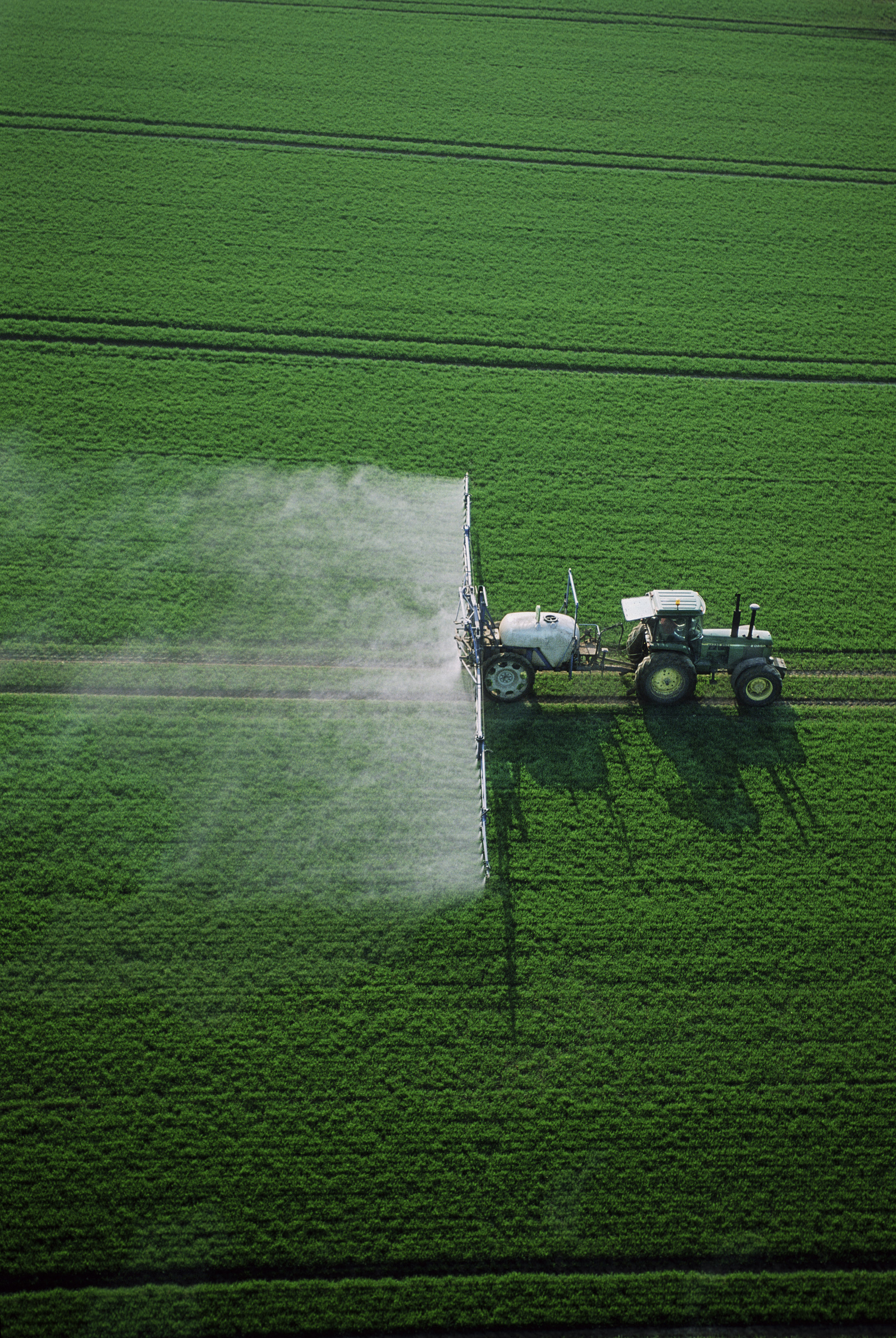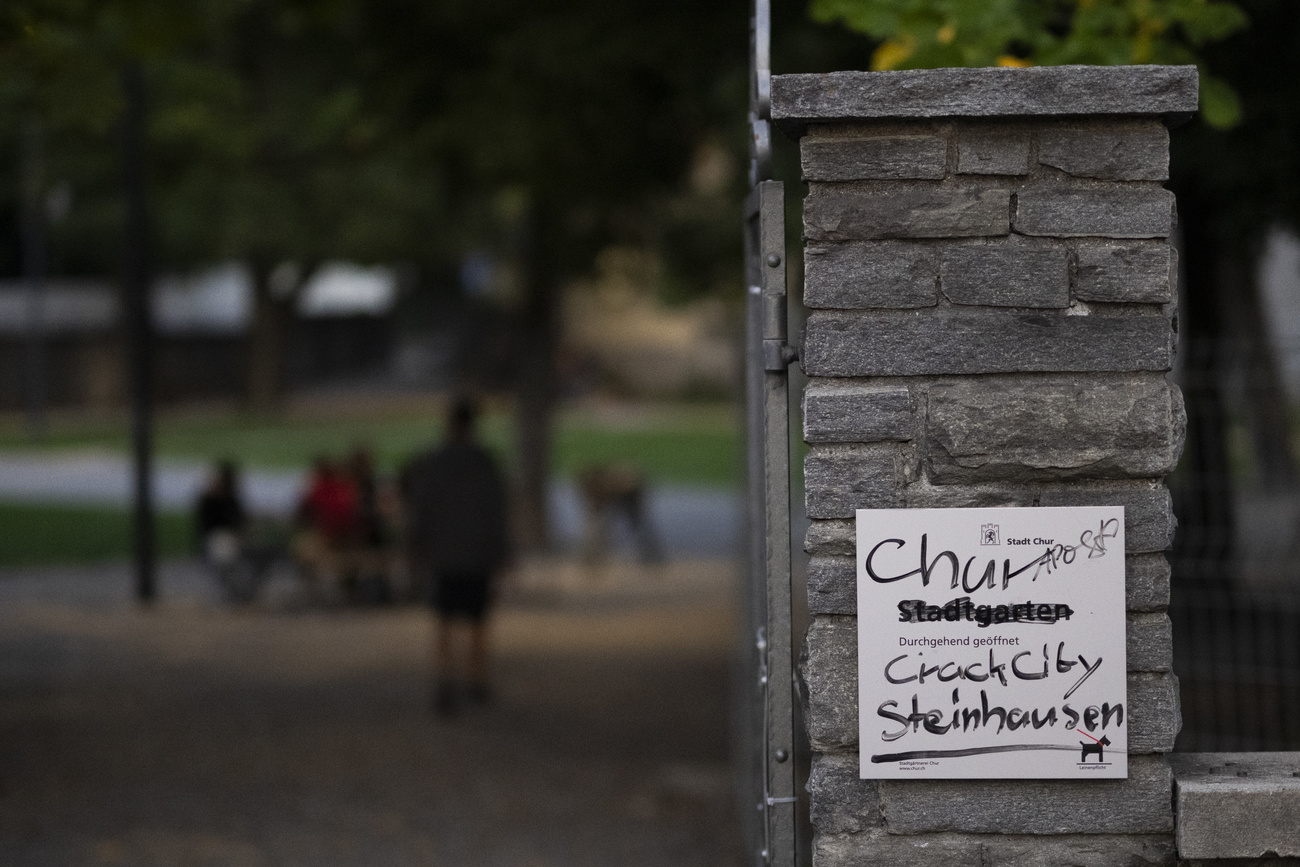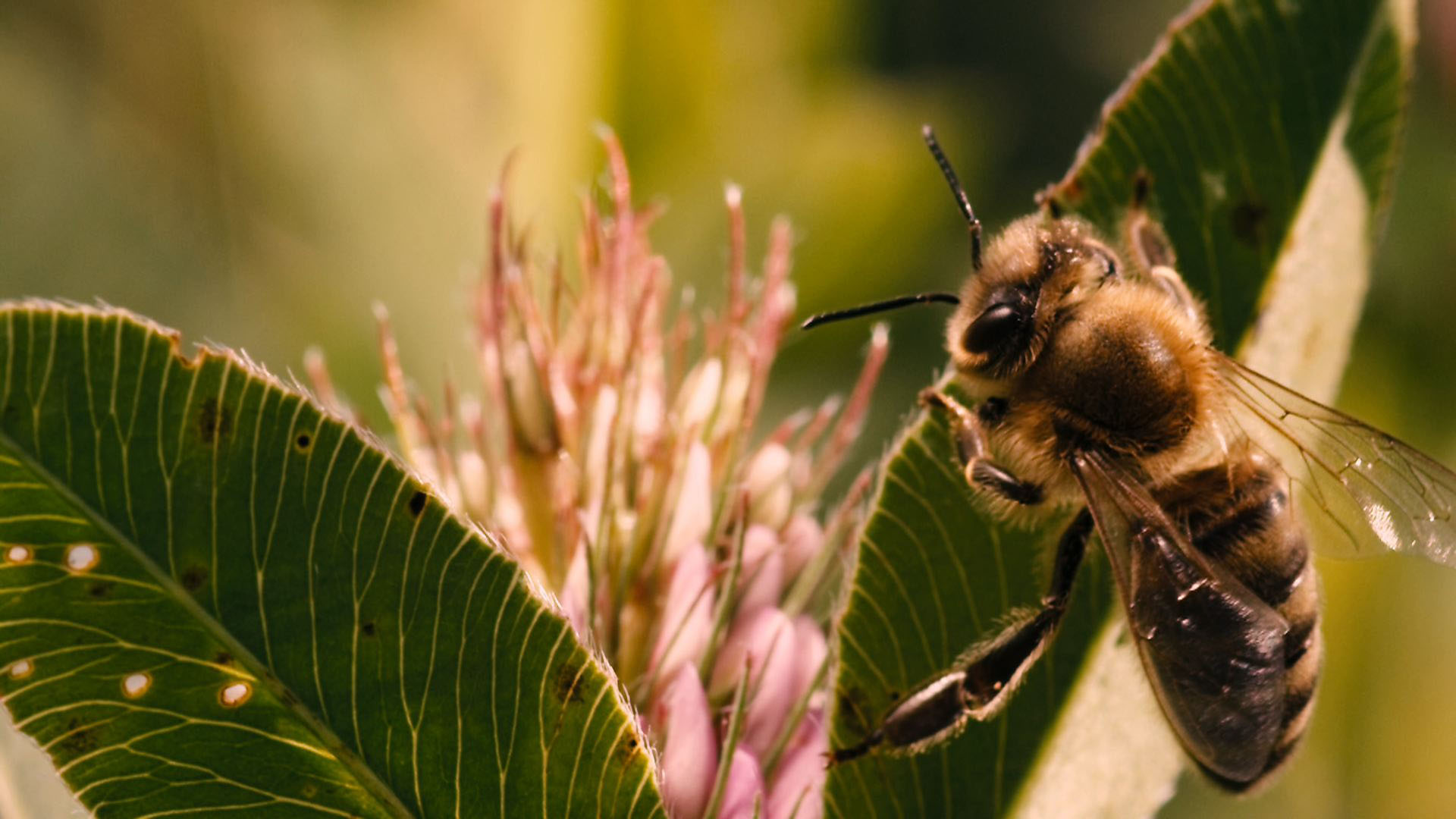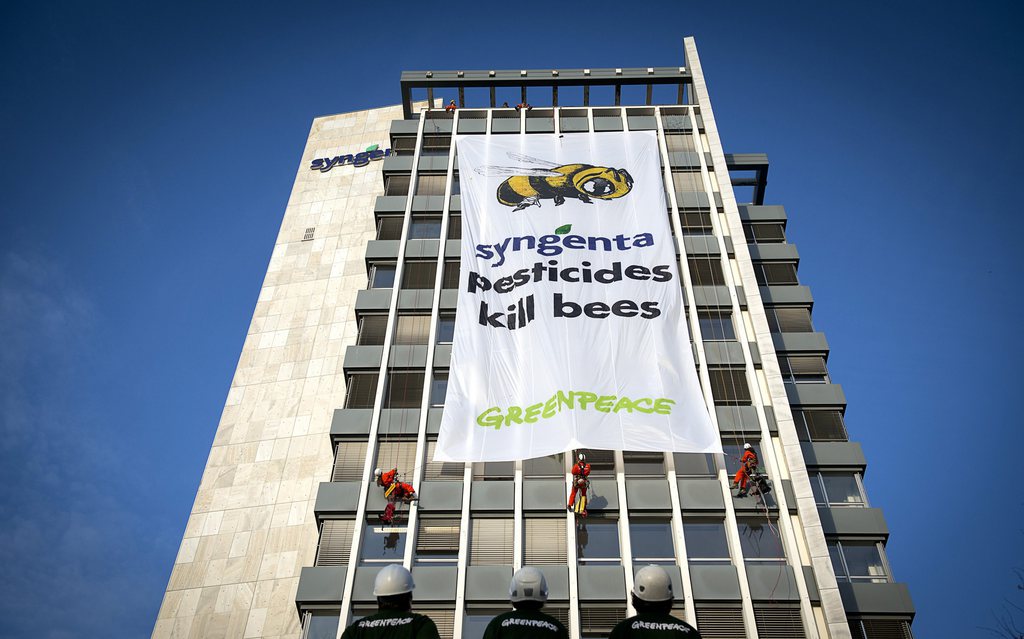The boon and bane of pesticides

New restrictions on the use of certain pesticides to protect bees will not only impact crop chemical companies, like Basel-based heavyweight Syngenta, but also the way European farmers produce the food we eat.
For about three weeks in May, extensive rape fields transform large rural areas in France, Germany and Britain into yellow.
German farmers alone grow about five million tons of rapeseed used for edible oil, fuel and fodder on 1.5 million hectares of arable land. Rapeseed oil is not only the most popular nutritional oil in Germany; rape flower celebrations attract tourists to towns like Sternberg in Mecklenburg-Vorpommern, the German state with the highest rapeseed production.
Rapeseed farmer Wolf-Dietmar Vetter is proud of the yellow-blossomed fields visitors admire when they drive through the region. But he is also concerned about the announced ban of nicotine-like pesticides, which he uses to fight various pests like pollen beetles, cabbage stem weevils and brassica pod midges on his 600 hectares around Sternberg.
“We are worried of course, and we don’t know what will happen next year,” Vetter said. “Seeds treatment with pesticides is very valuable for us because it is the most ecological. Because of the ban we will end up having to spray our crops more frequently and over large areas.”
Neonicotinoids were one of the first insecticides, which could be broadly used to treat seeds, allowing farmers to control important pests systemically on the entire plant.
Swiss and EU authorities recently suspended the use of these nicotine-like substances on some crops for two years over concerns that they may be linked to deaths in bee populations. They cited research showing that the nerve poison affects the bees’ orientation and navigation.
According to Syngenta, thiamethoxam, the active substance, does not have any “unacceptable” long-term effects on non-targeted beneficial arthropods as seed treatment or foliar sprays.
Jacques Bourgeois, director of the Swiss farmers’ association, fears that the authorities “put the cart before the horse” by banning pesticides before securing proof that they are linked to bee colony collapse.
Swiss beekeepers and researchers like Peter Gallmann from the Swiss centre for bee research, on the other hand, welcome the decision and urge the government to pledge more funds into studying the collapse of bee colonies. They say pesticides are one of many factors having a negative effect on bee health.
Concerned producers
The European Union announced at the end of April that it would suspend the use of neonicotinoids for two years from December over concerns they contribute to a decline in bee populations. Beekeepers and environmental lobby groups like Greenpeace welcomed the decision.
The moratorium affects almost all rapeseed in Germany, said Wolfgang Vogel, president of the German oil plant union. As a result of the ban, German and European agriculture could lose an important plant for crop rotation, he warned.
For Swiss farmers, the issue is also existential.
The pesticides secure our yields, explained Markus Ritter, president of the Swiss farmers’ association. “There is almost no organically grown rapeseed in Switzerland, an indication that protecting that crop is an unsolved problem. Extensive spraying – currently the only alternative – is more harmful to untargeted organisms than targeted seed treatment.”
For farmers in the Swiss Rhine Valley the suspension of neonicotinoids is going to be a “major” problem, according to Ursina Galbusera, who is responsible for crop farming at the Swiss association. “We fear that some farmers will end up having to quit growing maize altogether.”
At the same time, farmers are also concerned about substances which potentially harm bees, because the insects pollinate all their crops, said Ritter, who has been a passionate farmer but also a beekeeper for 30 years.
More at stake
Syngenta, the world’s largest crop chemicals company with annual sales of $14.2 billion (CHF13.3 billion), said the suspension of nicotine-like pesticides will impact its sales at under $100 million and that the losses would be partly compensated.
But for chemical companies there is also more at stake. Research during the two-year moratorium will either absolve their nicotine-like pesticides or reveal incriminating evidence linking them with dwindling bee populations, engendering a permanent ban.
The crop protection lobby warns that such a ban would erode the EU’s potential wealth by up to €17 billion over five years, putting the jobs of over a million people at risk. Those at least are the bleak findings of a report Bayer and Syngenta commissioned and financed to assess the value of neonicotinoid seed treatment.
The impact on companies’ revenues would also only be negligible as long as the suspension is limited to the EU. The products are growth drivers with projected peak sales of almost $2 billion worldwide, according to analysts’ estimates.
“The immediate effect on Syngenta’s sales is not very important, but there is concern about a global extension of the neonicotinoid ban – although we currently consider it unlikely,” said Martin Schreiber, an analyst at Zürcher Kantonalbank.
Schreiber estimates that Syngenta’s insecticide Actara and the seed treatment Cruiser Maxx – both containing the neonicotinoid thiamethoxam – generate $1 billion in sales. And replacing established optimised products requires time and money, Schreiber said.
Syngenta says itself that it is “extremely challenging” to find equally safe and effective alternatives, said spokesman Daniel Braxton.
Crop protection products are biologically active against pests. That is why they also carry the risk of being active against non-targeted organisms, said Olivier Félix, who is responsible for pesticides at the Federal Office for Agriculture.
It is the job of the industry to prove their products don’t carry any risk, we just check the evidence, Félix told swissinfo.ch. The requirements are stricter today, and we often have additional demands, requiring extra research and drawing out the process, Félix said.
“When we assess whether to approve a product we don’t just look at toxicity, we have to guarantee that the substance does not pose any unacceptable risk,” Félix explained. “We add safety margins into a realistic worst-case scenario, which result in a high level of security.”
Over the last 20 years, the EU re-evaluated about 1,000 crop protection substances. Two thirds of them were dropped because their limited business value did not justify the considerable investment into a re-evaluation.
Alternatives
It costs about $200 million to develop a new active ingredient from scratch, a process involving 2,500 scientists and 25,000 field trials in multiple sites, according to the company. From discovery to market entry it may take companies eight to ten years.
Pesticides are cheaper to develop than medicines, and their market is less regulated, Schreiber said. But many aspects are similar because effective chemicals – often toxic – inherently have the risk of causing collateral damage. So, safety is key.
Plant protection companies must prove that their substances selectively but effectively kill pests, but at the same time do not harm untargeted species and the environment – similar to effective medicines and their unwanted side effects. The challenge is to find the right balance, Syngenta says.
Switzerland withdrew the licenses for 124 out of 450 substances on the market in 2005, said Olivier Félix, responsible for pesticides at the Federal Office for Agriculture. Most of them had been used for a long time and were probably safe, but today you need proof, he said.
Authorities demand a comprehensive dossier, documenting the substance’s effects on all potentially affected organisms and for any conceivable use or dosage. Syngenta typically hands in 80 to 100 folders when it applies for marketing application for one of its products.
As a result, the pesticides available today are much safer than 20 years ago, Félix said. But they still retain their negative image in public perception, and are often perceived to be more harmful than other toxins produced for example by bacteria or fungus in foods, he explained.
Consumers tend to forget that crop protection products are used to improve produce, says Félix. The perfect products on the shelves today could not be made without producers taking invisible measures in the background to protect their cultures and enhance their crops, Félix explained.

In compliance with the JTI standards
More: SWI swissinfo.ch certified by the Journalism Trust Initiative











You can find an overview of ongoing debates with our journalists here . Please join us!
If you want to start a conversation about a topic raised in this article or want to report factual errors, email us at english@swissinfo.ch.